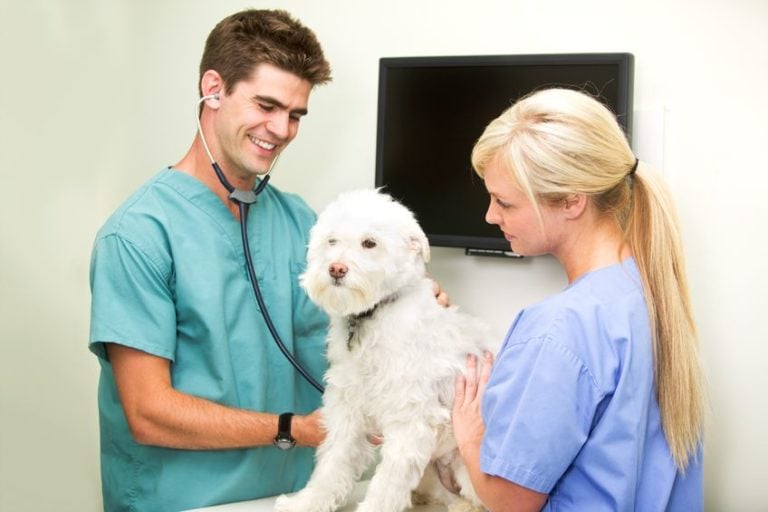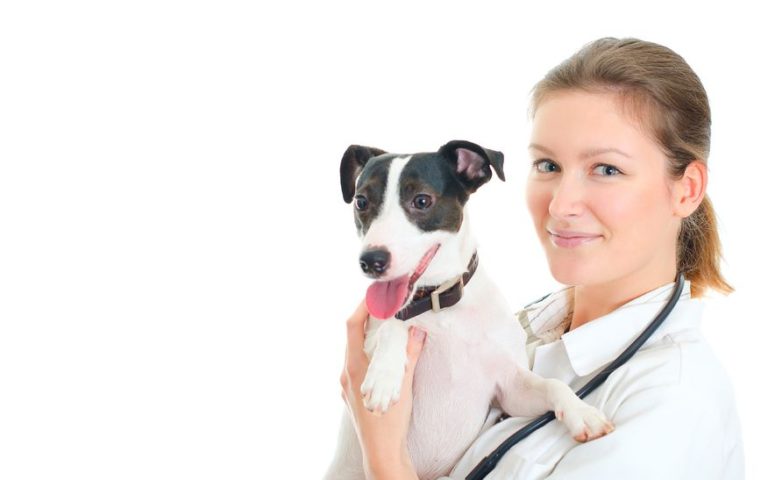It’s important to know what you’re putting into your pet’s body.
Even though Benadryl is a common treatment for dogs, it’s not safe for every dog and there may be adverse side effects if the necessary precautions aren’t taken.
Before administering any type of medication to your pup, including Benadryl, it is highly recommended that you talk to your vet to get an expert opinion. They’ll be able to tell you whether it’s safe or whether the medicine might cause a bad reaction.
Benadryl for dogs is often recommended by veterinarians as an over-the-counter (OTC) home treatment, but before giving it to your pet this article will help you find out more about it, whether it’s safe, and, if so, at what dosage it should be given.
What Is In Benadryl?
Benadryl is the brand name of the actual drug being administered.
The drug is called diphenhydramine, which is an antihistamine. Histamine is a chemical released by the body during an allergic reaction. An antihistamine blocks H-1 receptors to counteract the histamine chemical and reduce allergic reaction symptoms.
Applied topically, Benadryl can treat pain and itching caused by things such as poison ivy, poison oak, minor cuts and burns, and insect bites. Taken orally, it can treat allergies, hay fever, cold symptoms, and insomnia.
Benadryl is one of the most popular brands with diphenhydramine as an active ingredient, but Banophen, Diphenhist, Wal-Dryl, Nytol, Unisom, and ZzzQuil contain it as well.
Note: When treating your dog with an antihistamine product, make sure diphenhydramine is the only active ingredient.
Why Are Dogs Given Benadryl?
You might be wondering, why are dogs given Benadryl? Isn’t it for humans? Can’t that be dangerous?
It turns out, Benadryl can help lessen or eliminate many of the same symptoms it treats in humans, such as itching, coughing, redness, hives, swelling, inflammation, runny nose, and sneezing. In general, Benadryl for dogs is mostly used to treat allergies, travel anxiety, insomnia, stings and bites, and motion sickness by helping to hold back the need to vomit.
So if your dog suffers from allergies, has an allergic reaction, or you’re taking your pup into an area where they might get one (such as a hike), Benadryl can be a good way to treat or prevent these from happening. It also acts as a mild sedative to calm dogs that don’t like traveling, and it helps dogs that suffer from motion sickness feel less nauseated.
What Are The Side Effects of Benadryl for Dogs?
Like any medication, there are potential side effects when administering Benadryl to dogs:
- – Dry mouth
- – Decrease in urination
- – Sedation
- – Vomiting
- – Diarrhea
- – Loss of appetite
And it may react negatively with the following drugs:
- – Central Nervous System depressants
- – Amitraz
- – Furazolidon
- – Selegiline
- – Epinephrine
- – Heparin sodium or calcium
- – Warfarin sodium
Source: petMD
Dogs with glaucoma, heart disease, and/or hyperthyroidism could react badly to diphenhydramine (Benadryl).
As always, consult your vet before getting the “okay” to give Benadryl to your dog. Only your vet knows the specific medical history and potential complications of your canine, so they will be able to give you a tailored recommendation. Then you’ll have either peace of mind knowing that you’ve minimized any risks in administering it, or you’ll know that it isn’t safe and your vet will give you other options.
Do Veterinarians Recommend Benadryl? Is It Safe?
Veterinarians do like to recommend Benadryl as one of the safer home treatments for allergies, travel anxiety, and motion sickness in dogs.
There are natural remedies that some owners like to use instead, and there are also similar medicines made specifically for pets, like TranQuil-Chews and Virbac Anxitane. However, Benadryl is usually more readily available in homes and is easy to find when out and about.
Should I Give My Dog Benadryl or Only The Vet?
Yes, you can give your dog Benadryl, but it is highly recommended that you only administer it with a vet’s recommendation.
The Right Dosage of Benadryl to Administer
Consult your vet before administering, because the dosage can vary based on multiple factors pertaining to your dog.
Here is the right dosage of Benadryl (diphenhydramine) to give to your dog:
- – 2–4 mg per kg of body weight (or 1 mg per pound)
- – Every 8 to 12 hours (or two to three times a day)
As recommended by the Merck Veterinary Manual.
It usually takes 30 minutes to take effect, so plan accordingly. Also, it’s usually recommended that Benadryl is given in its tablet form rather than liquid or topical. However, if given in liquid form the dye-free children’s version is recommended as it does not contain alcohol.
Here’s a good instructional video on how to give your dog Benadryl:
How To Know If Your Dog Is Having a Bad Reaction
Some side effects of Benadryl are normal (and sometimes preferred), such as sedation. However, others like diarrhea, vomiting, and loss of appetite, may indicate your dog is having a bad reaction.
If you notice your dog’s symptoms worsening, or new ones coming up, give your vet a call or take your dog there as soon as possible.
According to Veterinary Place, dogs have survived doses up to 16 times more than the recommended dose, but an overdose can still be dangerous.
Wrapping It Up
In general, Benadryl is a safe medication to give dogs, as long it is given with a vet’s recommendation and at the correct dosage.
Once you find out if Benadryl is a good option for your pup, buy a couple bottles and put them in your pet emergency kit and/or travel kit for easy access if you ever need it.
Remember, that Benadryl is also easy to find when you are out and about if you are ever in a situation when it is needed.

Recent Pet Posts
Blog Categories
Product categories
- Accessories (7)
- Chicken & Veggie Wraps (8)
- Grillers Jerky Tenders (4)
- Jerky Treats (10)
- Made in the USA (9)
- Non-Rawhide Treats (28)
- Beggar Bone (11)
- Bully Sticks (4)
- Butcher Bone (4)
- Cod Skin Fish Treats (3)
- Pork Skin Twists (2)
- Pressed Rawhide Bones & Rolls (16)
- Bones & Rolls (6)
- Pressed Rawhide Bulk (6)
- Twist Sticks (4)
- Savory Munchies (13)
- Supreme Bones & Rolls (48)
- American Rawhide Bulk (16)
- Rawhide Bones (14)
- Rawhide Chips (6)
- Rawhide Rolls & Sticks (12)
- Uncategorized (8)






1 Comment. Leave new
I have to whisper Yes